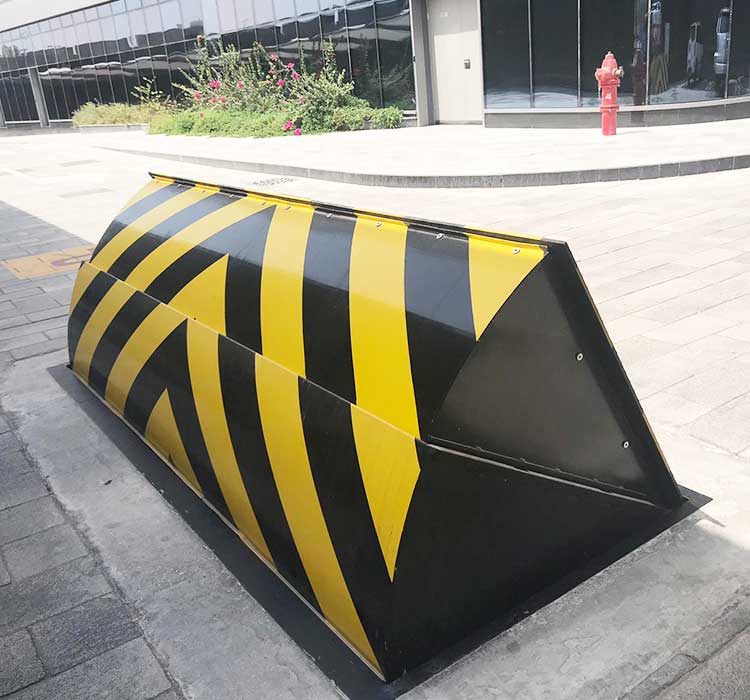What Purpose Do Bollards Serve and Why Are They Used?

Bollards are vertical posts or pillars that are used to control or manage traffic flow, increase security, and provide protection against ram-raids, vehicle-ramming attacks, and other forms of crime. They are commonly used in a variety of settings, such as public spaces, parking lots, commercial areas, and government buildings. Bollards come in a variety of materials, sizes, and designs, depending on the intended purpose and level of protection required. In this article, we will explore the different types of bollards and why they are essential in modern-day security and traffic management.
Types of Bollards
There are different types of bollards, and each type serves a specific purpose. The most typical kinds of bollards are as follows:
- Removable Bollards: These bollards are designed to be easily removed and re-installed as needed. They are commonly used in areas where temporary access is required or where parking is prohibited during certain times.
- Fixed Bollards: As the name suggests, fixed bollards are permanently installed and are not meant to be removed. They are commonly used to control traffic flow, prevent vehicle access, or provide perimeter security.
- Retractable Bollards: These bollards can be raised and lowered manually or automatically, depending on the type of mechanism installed. They are commonly used in areas where access control is required.
- Decorative Bollards: These bollards are designed to provide aesthetic appeal while still serving their intended purpose. They are commonly used in pedestrian areas, parks, and other public spaces.
- Crash-Rated Bollards: These bollards are designed to protect buildings and other structures from vehicle attacks. They are typically made of heavy-duty materials such as steel and are tested to specific standards such as LPS 1175.
Why Use Bollards?
Bollards are a type of vertical post or pillar that are typically used to provide physical security or to control traffic. They are commonly used in public spaces such as parks, pedestrian areas, and government buildings, as well as in private settings like commercial properties and residential complexes. But why are bollards so popular and what benefits do they offer?
Physical Security
One of the main reasons to use bollards is for physical security. Bollards can help prevent vehicle intrusions into pedestrian areas, protect buildings from vehicle-borne attacks, and deter criminal activity. They can also be used to prevent accidental collisions and to protect assets such as equipment and utilities.
Bollards come in a range of styles and strengths, with some models designed to stop vehicles from travelling at high speeds. For example, the LPS 1175 standard is used to test and rate bollards for their ability to withstand vehicle impacts. This means that bollards can be used to provide different levels of security depending on the specific needs of the site.
Traffic Control
Another reason to use bollards is for traffic control. Bollards can be used to regulate the flow of vehicles, prevent unauthorized parking, and create barriers to certain areas. They can also be used to protect pedestrians and cyclists from vehicle traffic.
Bollards can be used in a variety of settings, such as car parks, loading zones, and bus lanes. In addition, some bollards can be retractable, allowing them to be lowered and raised as needed. This is particularly useful in areas where access needs to be restricted at certain times of day, such as during peak traffic hours or for special events.
Aesthetics
While bollards are primarily functional, they can also be designed to be aesthetically pleasing. Bollards can be made from a range of materials, including stainless steel, concrete, and wood. They can also be customized with decorative features, such as lights or patterns.
In public spaces, bollards can be used to enhance the overall look of the area while still providing security or traffic control. In commercial settings, bollards can be used to reinforce a brand or to complement the design of the building.
Cost-Effective
Bollards are a cost-effective solution for providing security and traffic control. They are relatively inexpensive compared to other security measures, such as walls or fences, and they require less maintenance over time. Bollards can also be easily replaced if damaged or if the site requirements change.
Bollards can help prevent costly accidents or incidents. For example, a bollard that stops a vehicle from crashing into a building can save thousands of dollars in repair costs and potentially even prevent injury or loss of life.
In conclusion, bollards are a versatile and practical solution for a range of security and traffic control needs. They offer a cost-effective way to provide physical security, regulate traffic flow, and enhance the aesthetics of a space. Whether in public or private settings, bollards can provide peace of mind and help prevent accidents and incidents.
Road Blockers and Barriers
Types of Road Blockers and Barriers
There are several types of road blockers and barriers available on the market, each designed to suit specific security needs. Here are some of the most common types of road blockers and barriers:
- Rising Bollards: Rising bollards are retractable posts that rise up from the ground to block vehicles from entering restricted areas. They can be operated manually, electronically or hydraulically, depending on the level of security required.
- Drop Arm Barriers: Drop arm barriers are simple yet effective security devices that consist of a horizontal beam that is lowered or raised to allow or restrict vehicle access. They are often used in car parks and other low-security areas.
- Sliding Gates: Sliding gates are a popular option for high-security locations, such as military bases and airports. They consist of a large metal gate that slides horizontally to block vehicle access.
- Crash Barriers: Crash barriers are designed to prevent vehicles from penetrating a perimeter fence or wall. They are made of heavy-duty materials such as steel and concrete and are designed to withstand the impact of a moving vehicle.
Benefits of Road Blockers and Barriers
Road blockers and barriers are essential components of physical security systems. Here are some of the key benefits of using road blockers and barriers:
- Increased Security: Road blockers and barriers provide an effective means of controlling vehicular access to sensitive locations. They are designed to prevent unauthorized vehicles from entering restricted areas, thereby reducing the risk of theft, vandalism, and terrorism.
- Versatility: Road blockers and barriers are available in a range of sizes and types to suit different applications. This makes them a versatile security solution that can be used in a variety of settings.
- Durability: Road blockers and barriers are made of heavy-duty materials that are designed to withstand the impact of a moving vehicle. This means that they offer long-lasting protection against security threats.
- Compliance: Many road blockers and barriers are tested and certified to meet industry standards such as LPS 1175. This ensures that they comply with relevant safety and security regulations.
Road blockers and barriers are an essential part of modern infrastructure designed to protect people, property, and critical infrastructure from intentional and accidental damage. They are typically used to secure entrances to high-security areas such as government buildings, airports, banks, and other critical infrastructure sites. They come in various forms and are designed to provide different levels of protection depending on the specific needs of the site. In this article, we will discuss the different types of road blockers and barriers and their uses.



